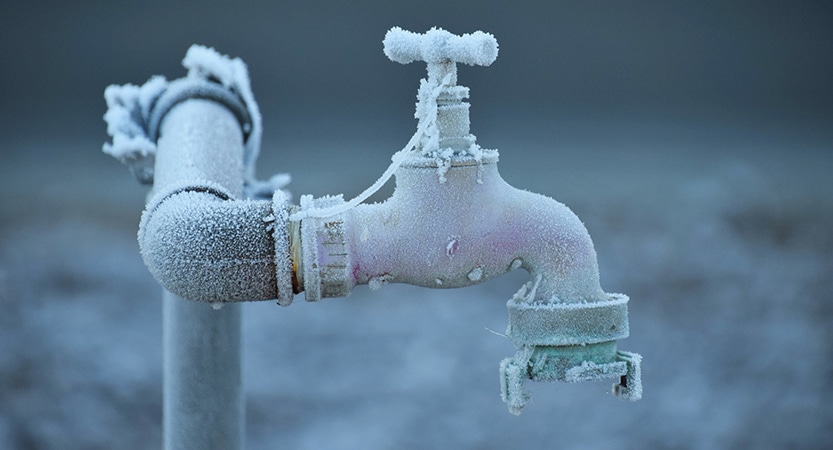Important Advice to Prevent Frozen Plumbing in Winter: Professional Guidance
Important Advice to Prevent Frozen Plumbing in Winter: Professional Guidance
Blog Article
Have you been looking for related information involving 6 Ways to Prevent Frozen Pipes?

Cold weather can ruin your pipes, specifically by freezing pipes. Below's just how to stop it from occurring and what to do if it does.
Introduction
As temperatures decline, the threat of icy pipelines rises, possibly resulting in expensive repair work and water damages. Understanding just how to prevent icy pipelines is important for home owners in cool environments.
Comprehending Frozen Pipelines
What triggers pipes to freeze?
Pipes freeze when subjected to temperatures listed below 32 ° F (0 ° C) for expanded periods. As water inside the pipelines ices up, it increases, putting pressure on the pipeline walls and possibly triggering them to rupture.
Threats and damages
Icy pipes can lead to water system disruptions, building damages, and costly repairs. Burst pipelines can flooding homes and cause considerable architectural damages.
Indicators of Frozen Pipeline
Identifying frozen pipelines early can avoid them from bursting.
How to identify icy pipes
Seek lowered water flow from faucets, uncommon odors or sounds from pipes, and visible frost on exposed pipes.
Avoidance Tips
Protecting prone pipelines
Cover pipelines in insulation sleeves or utilize warm tape to secure them from freezing temperatures. Focus on pipelines in unheated or exterior locations of the home.
Heating techniques
Maintain interior areas appropriately heated, especially locations with plumbing. Open cabinet doors to allow cozy air to distribute around pipes under sinks.
Safeguarding Outdoor Pipes
Garden hoses and exterior faucets
Disconnect and drain yard tubes before winter. Set up frost-proof spigots or cover outdoor faucets with insulated caps.
What to Do If Your Pipelines Freeze
Immediate activities to take
If you believe icy pipes, maintain faucets open up to ease stress as the ice thaws. Utilize a hairdryer or towels soaked in hot water to thaw pipes slowly.
Long-Term Solutions
Structural adjustments
Consider rerouting pipes away from exterior walls or unheated areas. Include extra insulation to attics, basements, and crawl spaces.
Updating insulation
Invest in high-grade insulation for pipelines, attic rooms, and walls. Appropriate insulation aids maintain constant temperatures and minimizes the danger of frozen pipelines.
Final thought
Protecting against icy pipelines needs positive steps and quick responses. By comprehending the reasons, indications, and preventive measures, homeowners can secure their plumbing throughout cold weather.
5 Ways to Prevent Frozen Pipes
Drain Outdoor Faucets and Disconnect Hoses
First, close the shut-off valve that controls the flow of water in the pipe to your outdoor faucet. Then, head outside to disconnect and drain your hose and open the outdoor faucet to allow the water to completely drain out of the line. Turn off the faucet when done. Finally, head back to the shut-off valve and drain the remaining water inside the pipe into a bucket or container. Additionally, if you have a home irrigation system, you should consider hiring an expert to clear the system of water each year.
Insulate Pipes
One of the best and most cost-effective methods for preventing frozen water pipes is to wrap your pipes with insulation. This is especially important for areas in your home that aren’t exposed to heat, such as an attic. We suggest using foam sleeves, which can typically be found at your local hardware store.
Keep Heat Running at 65
Your pipes are located inside your walls, and the temperature there is much colder than the rest of the house. To prevent your pipes from freezing, The Insurance Information Institute suggests that you keep your home heated to at least 65 degrees, even when traveling. You may want to invest in smart devices that can keep an eye on the temperature in your home while you’re away.
Leave Water Dripping
Moving water — even a small trickle — can prevent ice from forming inside your pipes. When freezing temps are imminent, start a drip of water from all faucets that serve exposed pipes. Leaving a few faucets running will also help relieve pressure inside the pipes and help prevent a rupture if the water inside freezes.
Open Cupboard Doors
Warm your kitchen and bathroom pipes by opening cupboards and vanities. You should also leave your interior doors ajar to help warm air circulate evenly throughout your home.
:strip_icc()/snow-outdoor-faucet-pipes-4af65d1e5e904fb1aa7bf74071fe5d89.jpg)
We had been brought to that report about Prevent Frozen Pipes from someone on another web page. Sharing is caring. Who knows, you may very well be helping someone out. Thank you for your time. Kindly stop by our website back soon.
Appointment Report this page